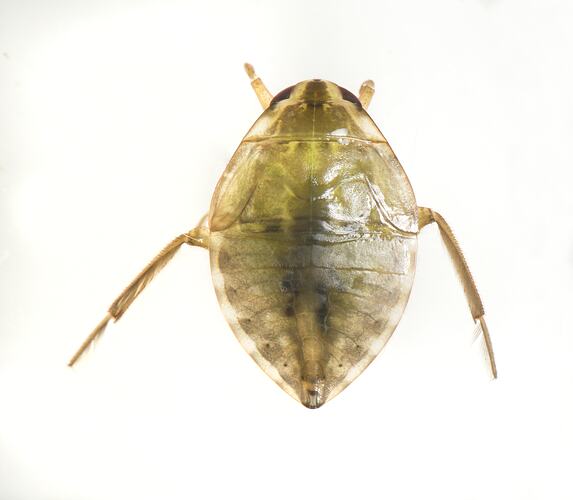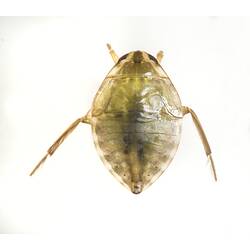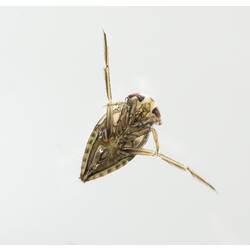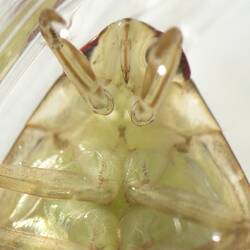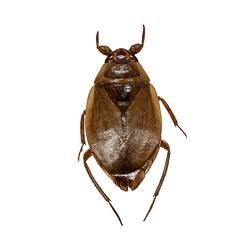General Description
This species of giant water bug has front legs like a praying mantis (raptorial fore legs), where the prey are trapped between the first two leg segments. The middle and hind legs are flattened and fringed with hairs and are used for swimming. Body length is 1.5-2.5 cm.
Biology
Giant water bugs are strong swimmers and active predators. However, they prefer to sit and wait for their prey. They eat a varied diet and will probably attack anything they can subdue. Large individuals of some members of this group will attack small frogs and fish. Eggs are glued by females to the back of the males, who carry them until they hatch. Like top predators in other ecosystems (e.g. lions), giant water bugs are unlikely to be very abundant and usually only one to two individuals can be found in a water body. This group of water bugs, the belostomatids, are the largest aquatic bugs and can reach 7 cm in length.
Distribution
Throughout Australia but usually close to the coast.
Habitat
Often found amongst submerged water plants.
More Information
-
Animal Type
-
Animal SubType
-
Fast Fact
Like top predators in other ecosystems (e.g. lions), giant water bugs are unlikely to be very abundant and usually only one to two individuals can be found in a water body.
-
Brief Id
Large swimming bug with an oval- shaped, flattened body.
-
Colours
Brown
-
Maximum Size
2.5 cm
-
Habitats
-
Diet
Carnivore
-
Hazards
Giant water bugs can bite humans. The bites are not harmful, but produce a burning sensation, which can last for some hours.
-
Endemicity
-
Commercial
No
-
Taxon Name
-
Scientific Author
(Dufour, 1863)
-
Common Name
Belostomatid Water Bug
-
Kingdom
-
Phylum
-
Subphylum
-
Class
-
Order
-
Suborder
-
Infraorder
-
Superfamily
-
Family
-
Subfamily
-
Genus
-
Species Name
eques
